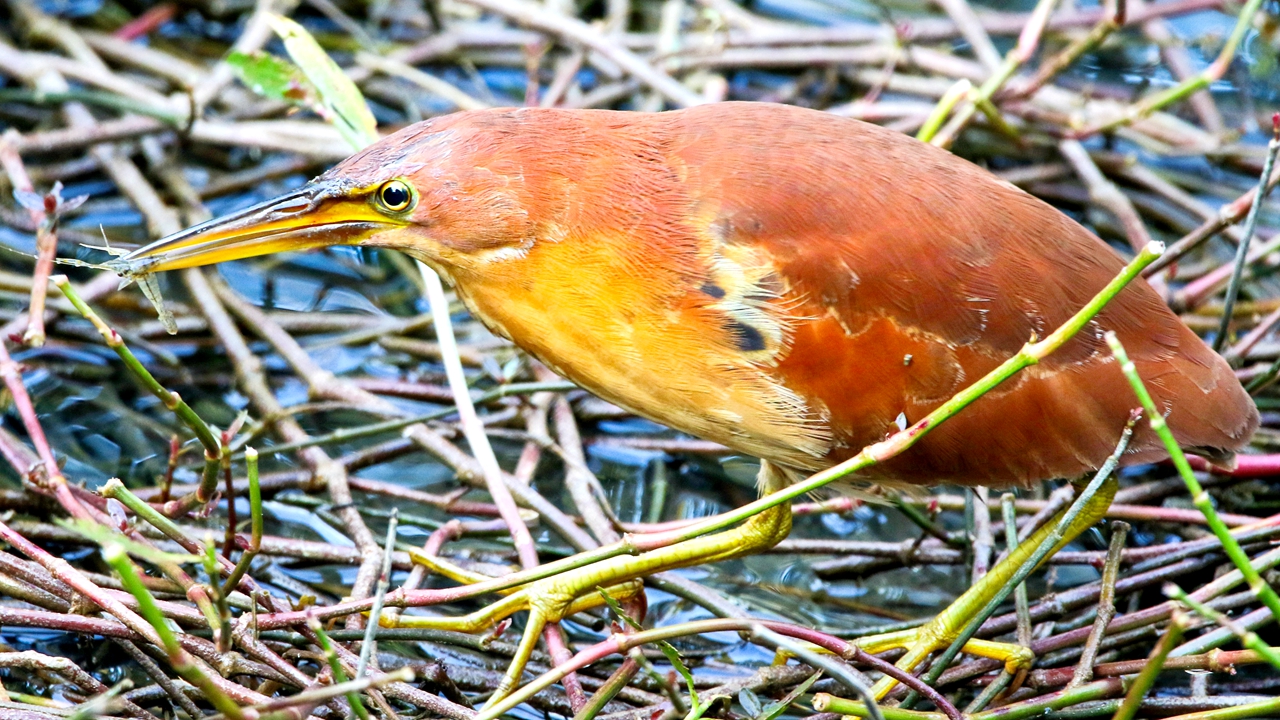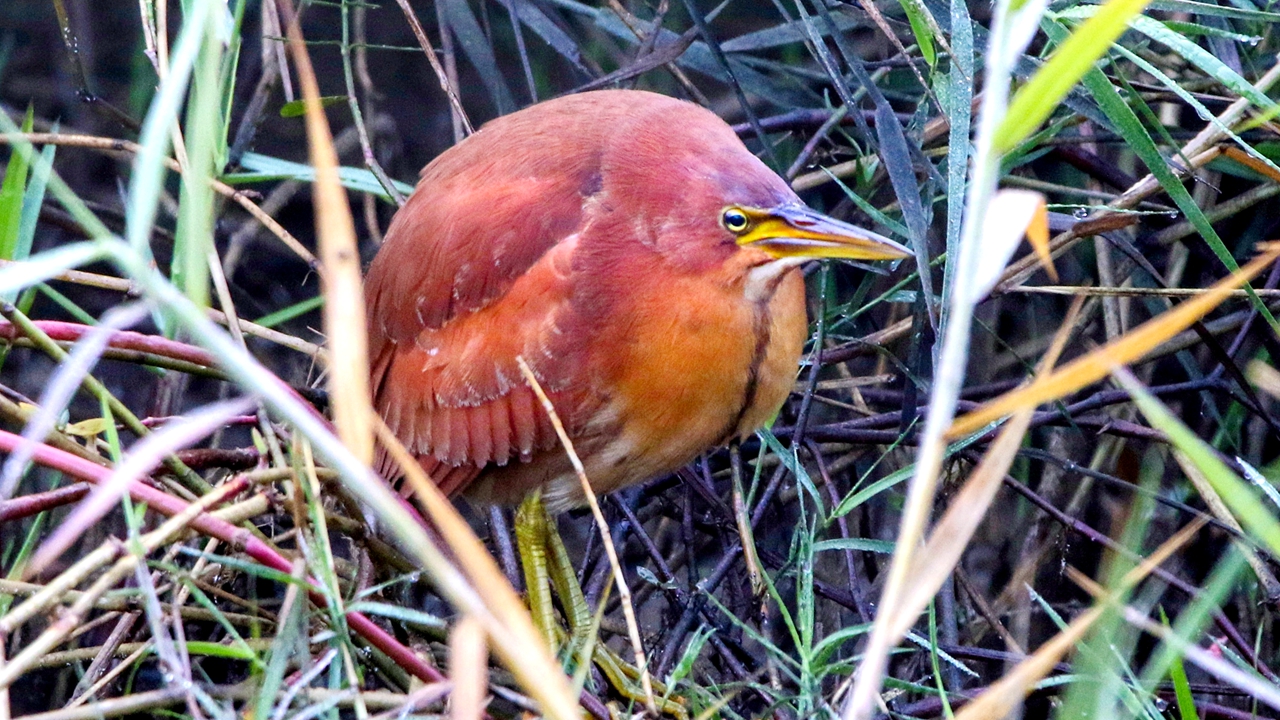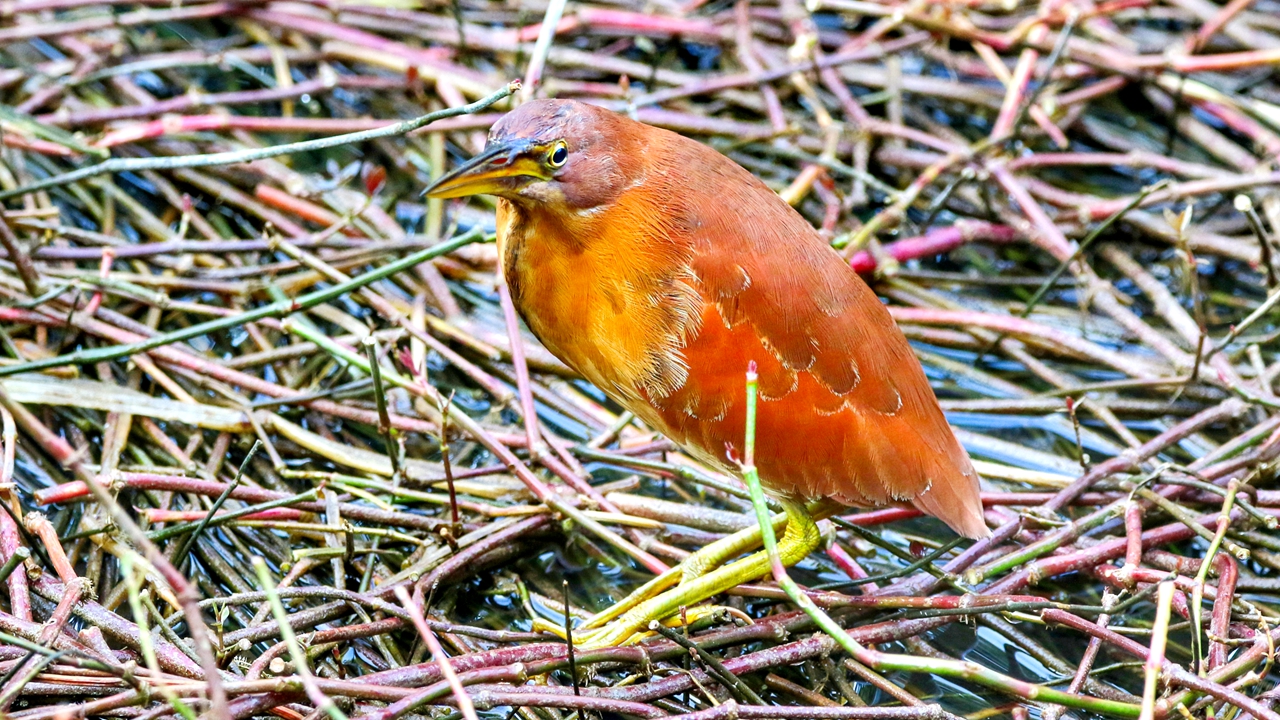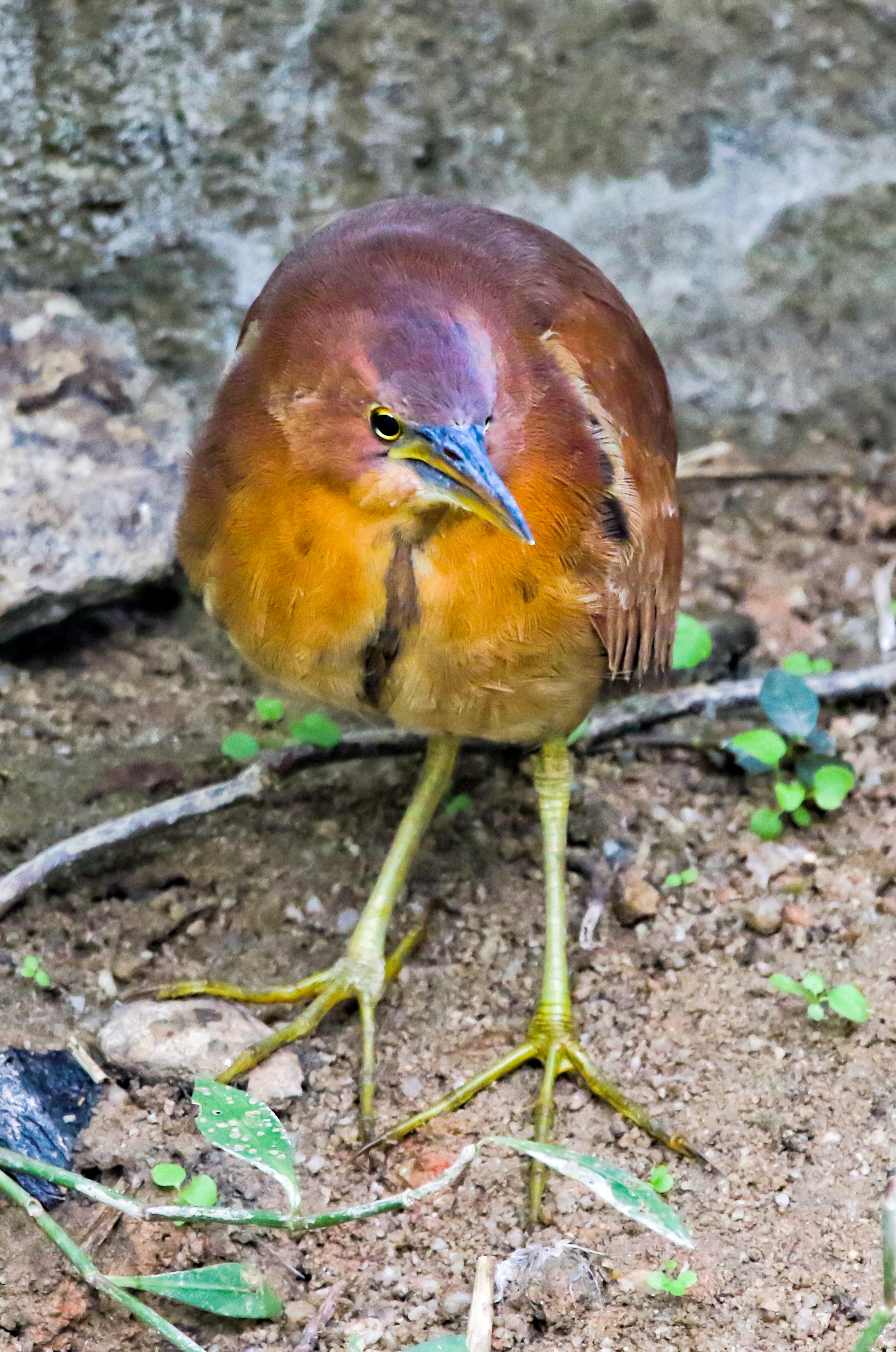The cinnamon bittern
Writer: Isaac Cohen | Editor: Liu Minxia | From:

A cinnamon bittern is seen foraging in Futian Mangrove Ecological Park. Photos by Isaac Cohen
The cinnamon bittern
The cinnamon bittern, with the scientific name Ixobrychus cinnamomeus, is a stunning bird belonging to the heron family. It measures approximately 40 centimeters in length and features pale cinnamon-colored plumage with streaks on the chest, and dark brown hues on the base of its neck.Its striking physical attributes include a long orange beak, yellow eyes, and reddish lores that perfectly complement its olive-yellow legs.
栗苇鳽,属鹤形目鹭科,体长约40厘米,体色栗红,胸部具深色纵纹,肩部羽毛缀有紫栗色光彩,橙色的喙甚长,虹膜黄色,眼先皮肤粉红色,腿橄榄黄色。

A cinnamon bittern is seen foraging in Futian Mangrove Ecological Park.
While Shenzhen falls within the natural distribution range of this beautiful bird, regrettably there is currently no resident population in our city, and we must make do with viewing them as sporadic visitors.
虽然栗苇鳽的分布范围包括深圳,但是在这里并没有稳定的繁殖记录,所以它们被定义为不常见旅鸟。
The cinnamon bittern’s elusive nature and preferred habitat make it quite challenging to spot when they are around. Typically, they inhabit large grassy areas in wetlands and rarely venture into open spaces. Their diet consists mainly of fish or other animal species inhabiting grassy wetlands such as frogs, mollusks, insects and shrimp.
栗苇鳽行踪隐秘,难得一见。它们喜欢栖息于植被茂密的湿地区域,甚少在开阔地带活动。它们主要以湿地鱼类、蛙类、软体类、昆虫及虾类动物为食。

A cinnamon bittern is seen foraging in Futian Mangrove Ecological Park.
The bird’s breeding season is typically tied to the rainy season wherever they reside. They construct their nests over emerging plants that are very close to water bodies. A female lays up to five eggs per clutch, and both parents take turns incubating for about three weeks.
栗苇鳽在雨季繁殖,营巢于水边茂密植被丛中,雌鸟每窝产卵可达5枚,由亲鸟轮流孵化三周后雏鸟方会破壳。

A cinnamon bittern is seen foraging in Futian Mangrove Ecological Park.
Imagine having more individuals of this species as permanent residents in our city; it would be fantastic! Preserving and protecting our city’s natural ecosystems is crucial to encouraging the presence of this and many other species that may one day call our town their home. Let us continue working towards this goal.
多希望有朝一日,栗苇鳽能成为深圳的留鸟!因此就更要保护好这座城市的生态环境,让它们乃至更多的物种在深圳安家、繁衍后代。想要实现这个目标,我们依然任重而道远。